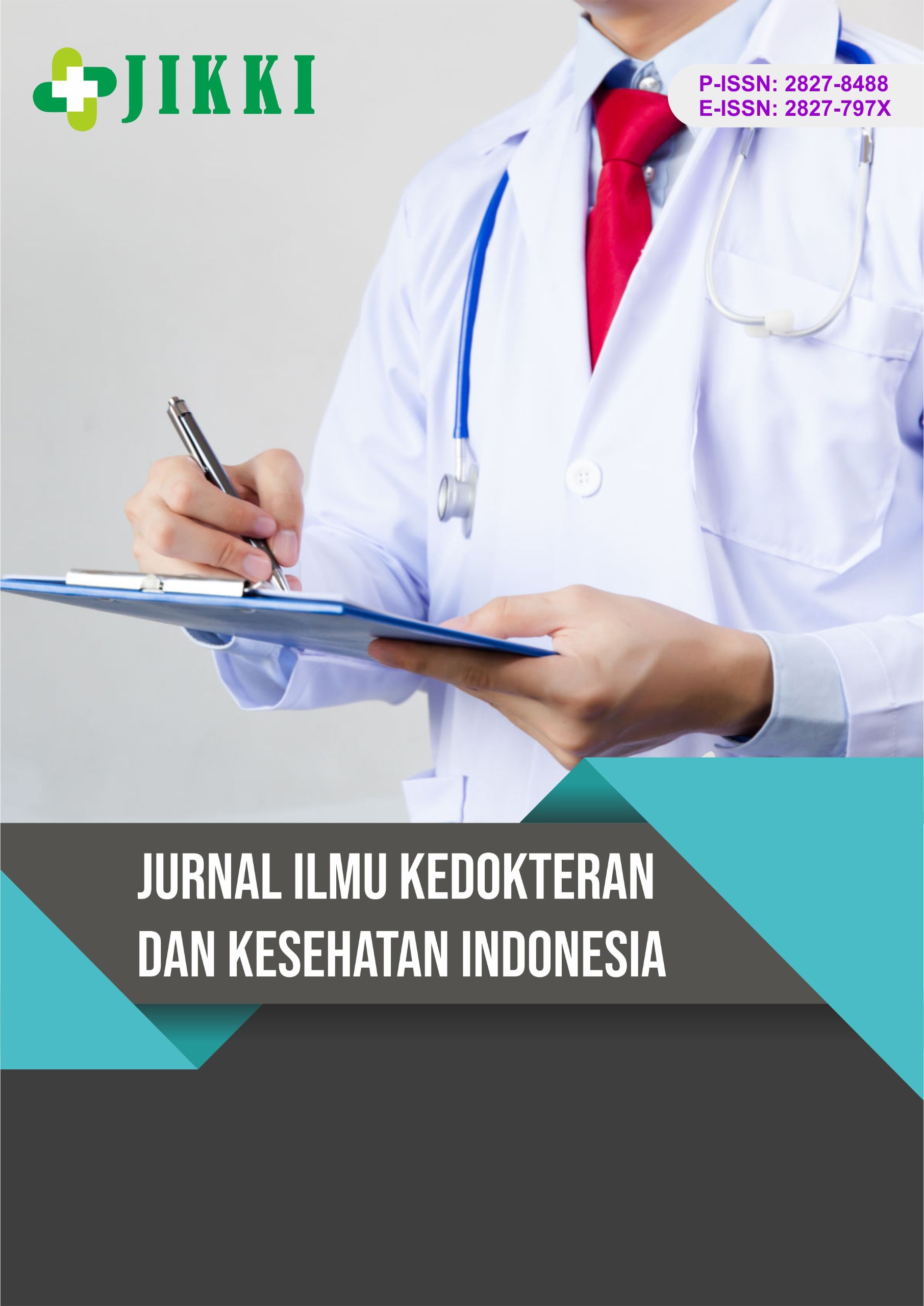Prosedur Pemeriksaan Radiografi Cervical Dinamik pada Klinis Herniated Nucleus Pulposus (HNP) di Instalasi Radiologi RSUD Brebes
DOI:
https://doi.org/10.55606/jikki.v5i3.8355Keywords:
Cervical Radiography, HNP, Hyperextension, Hyperflexion Projection, RadiographerAbstract
Background: Herniated Nucleus Pulposus (HNP) in the cervical region is a condition in which the intervertebral disc protrudes and may compress the nerve roots, causing pain and movement disorders. At the Radiology Department of RSUD Brebes, there are differences in cervical examination techniques compared to standard theory, namely the use of hyperflexion and hyperextension projections. Objective: This study aims to further examine the radiographic techniques used in cervical examinations with clinical indications of Herniated Nucleus Pulposus (HNP), particularly the use of additional lateral hyperflexion and hyperextension projections. Method: This research employed a qualitative method with a case study approach. Data collection was conducted through observation, interviews, documentation, and literature review at the Radiology Department of RSUD Brebes. Informants included five people: three radiographers, one radiology specialist, and one referring physician. Data were analyzed using reduction, presentation, and conclusion drawing techniques. Results: Dynamic cervical radiographic examination for clinical HNP at RSUD Brebes utilized additional hyperflexion and hyperextension projections with the patient standing sideways at the bucky stand, the Central Point (CP) located at cervical 4, and the Central Ray (CR) perpendicular horizontally. Focus Film Distance (FFD) was 100 cm, with exposure factors of 77 kV and 10 mAs. Patient preparation required no special measures, only removing metal objects around the cervical region such as earrings and necklaces. The rationale for using hyperflexion and hyperextension projections in dynamic cervical examinations for HNP cases at RSUD Brebes was to determine whether there was compression or displacement at the intervertebral disc. Conclusion: Dynamic cervical radiographic techniques for HNP cases at RSUD Brebes were conducted using hyperflexion and hyperextension projections. This examination was also used to evaluate degenerative conditions commonly occurring with aging and to assess cervical movement, since this region is more dynamic compared to thoracic and lumbar vertebrae, thus helping identify movement limitations in patients to support diagnosis.
References
Alizada, M., Li, R. R., & Hayatullah, G. (2018). Cervical instability in cervical spondylosis patients: Significance of the radiographic index method for evaluation. Orthopade, 47(12), 977–984. https://doi.org/10.1007/s00132-018-3635-3
Anisa, D. (2021). Prosedur pemeriksaan radiografi cervical pada kasus cervical root syndrome di Instalasi Radiologi RSUD Bendan Kota Pekalongan [Undergraduate thesis, Poltekkes Kemenkes Semarang].
Benjamin Ma, C. (2023). Herniated nucleus pulposus. MedlinePlus. https://medlineplus.gov/ency/imagepages/9700.htm
De Cicco, F., O, G., & Willhuber, C. (2023). Nucleus pulposus herniation. In StatPearls [Internet]. StatPearls Publishing. https://www.ncbi.nlm.nih.gov/books/
Gama, A. A., Hartanto, A. D., & Sari, B. W. (2017). Penerapan teorema Bayes pada sistem pakar penyakit herniated nucleus pulposus (HNP). Jurnal Ilmiah DASI, 18(2), 31–36.
Hansen, J. T. (2019). Netter’s clinical anatomy. Elsevier.
Hollevoet, J., Biesemans, L., & Roosen, P. (2022). Flexion-extension views in the evaluation of cervical-spine injuries. The Open Orthopaedics Journal, 16, 1–6. https://www.ncbi.nlm.nih.gov/pmc/articles/PMC9230391/
Lampignano, J., & Kendrick, L. E. (2020). Bontrager’s textbook of radiographic positioning and related anatomy. Elsevier Health Sciences. https://books.google.co.id/books?id=
Mahdi, I. A. (2016). Penatalaksanaan fisioterapi pada kasus hernia nucleus pulposus cervical 6-7 [Undergraduate thesis, Universitas Muhammadiyah Surakarta]. eprints.ums.ac.id
Majdawati, A. (2020). Hubungan gejala klinis cervical syndrome dengan foto polos servikal tiga posisi. Mandala of Health, 13(1), 13–21. https://doi.org/10.20884/1.mandala.2018.11.1
Mentari, R. M. N., & Sulaksono. (2018). Peranan alat Aerocom Pneumatic Tube System pada pemeriksaan vertebrae cervical dengan kasus trauma. Jurnal Radiologi Indonesia.
Moley, P. J. (2022). Lumbar herniated nucleus pulposus. In MERCK MANUAL professional version. https://www.merckmanuals.com/professional/musculoskeletal-and-connective-tissue-disorders/neck-and-back-pain/lumbar-herniated-nucleus-pulposus
Murphy, A., Worsley, C., Knipe, H., et al. (2022). Cervical spine (flexion and extension views). Radiopaedia.org. https://doi.org/10.53347/rID-58732
Nadeak, B. (2018). Penegakan diagnosis dan penanggulangan cervicalis herniated nucleus pulposus [Undergraduate thesis, Universitas Kristen Indonesia].
Oh, J. J., & Asha, S. E. (2016). Utility of flexion–extension radiography for the detection of ligamentous cervical spine injury and its current role in the clearance of the cervical spine. Emergency Medicine Australasia, 28(2), 216–223. https://doi.org/10.1111/1742-6723.12525
Rollins, J. H., Long, B. W., & Curtis, T. (2022). Merrill’s atlas of radiographic positioning and procedures (3-volume set, E-book). Mosby. https://books.google.co.id/books?id=bXNeEAAAQBAJ
Singh, A. P. (2025). Flexion-extension X-rays of cervical spine. Bone and Spine. https://boneandspine.com/flexion-extension-x-rays-of-cervical-spine
Wahyuni, F., Sugiarti, S., & Ramdani, R. (2019). Gambaran pemeriksaan cervical right posterior oblique menggunakan central ray tegak lurus dan 15° chepalad. Health Care Media, 3(5), 3–8.
Downloads
Published
How to Cite
Issue
Section
License
Copyright (c) 2025 Jurnal Ilmu Kedokteran dan Kesehatan Indonesia

This work is licensed under a Creative Commons Attribution-ShareAlike 4.0 International License.








